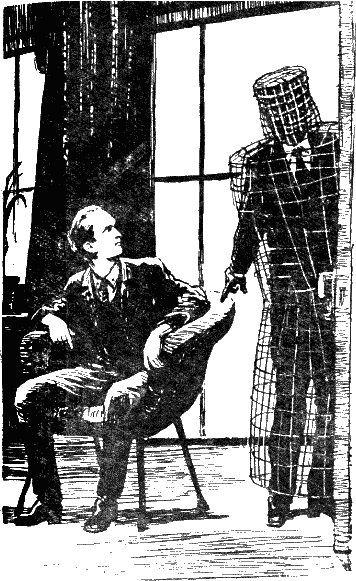Was the plot of the original The Fly ripped from the headlines... of 80 years previously?
In 1878 a report from Bombay reached Australia describing an amazing and terrible new invention (reprint from The Brisbane Courier, July 27):
The Teleport.
The telephone and the phonograph are no doubt very wonderful examples (says the Melbourne Daily Telegraph) of the purposes to which the power of electricity may be applied, but these novelties begin to sink into insignificance before the still more recent strides of science. The newest contrivance is called a teleport, and is described by a Bombay paper "as an apparatus by which man can be reduced into infinitesimal atoms, transmitted through a wire, and reproduced safe and sound at the other end." The apparatus, according to the Indian paper, consists of a powerful battery, a large metal disc, a bell-shaped glass house, and a large iron funnel connected with the wire. An experiment is described as follows:—"A dog was placed on the metal disc, and a 'powerful current' was applied to it. After a while the animal disappeared, and was found at the other end gnawing a bone, just as it was doing before it was 'transported.' Afterwards a boy was experimented upon. Under the glass house, it is reported, the inventor of the machine placed a Goanese boy, Pedro—who was grinning as if he thought it a good joke—and we suspect it was not the first time he had been in that house. The current was again applied to the under part of the disc, and the same effect was observed as with the dog. The house was instantaneously filled with a vaporous man, whose features and parts were quite distinct until they disappeared. Even the grin was discernible as a mere film of vapour—in fact, it seemed to us that the grin remained even after the body had disappeared. In fifteen seconds Pedro was gone; but they found him also at the end of the wire. It was then attempted to send the boy and the dog along at once, but by an unfortunate accident the 'infinitesimal atoms' of the boy and those of the dog got 'mixed' in transitu, and the result was that they both looked dreadfully unnatural creatures." At least, so says the Bombay paper in its account of the first experiments with the "teleport." It says that by means of the teleport a man will be able to travel from India to England by submarine cable in a few minutes, but unfortunately there is always the danger that the "disintegrated atoms" of one man may become mixed with those of another, as in the case of Pedro and the dog, and for this reason it is feared that the teleport will not supersede the railways—at least, not so far as the passenger traffic is concerned.
Left unanswered, fortunately, was "How does Pedrodog eat?"







